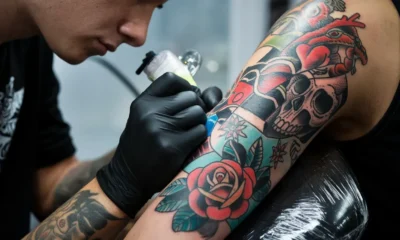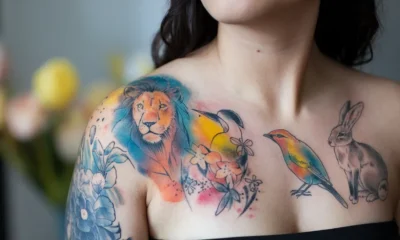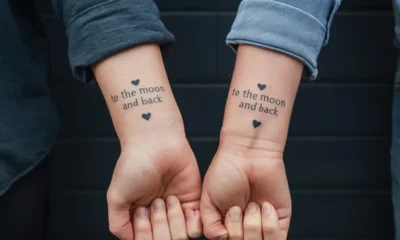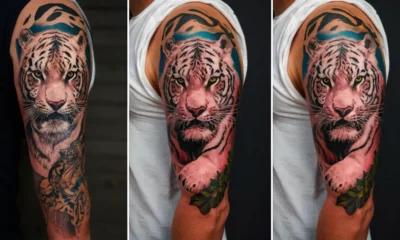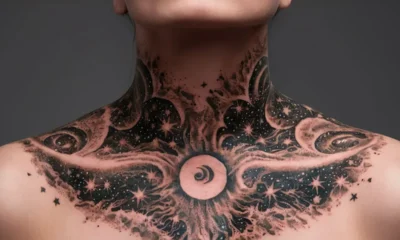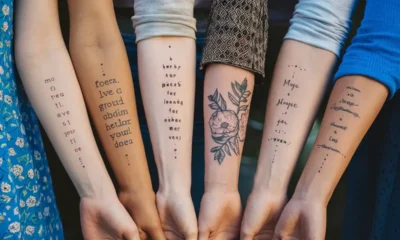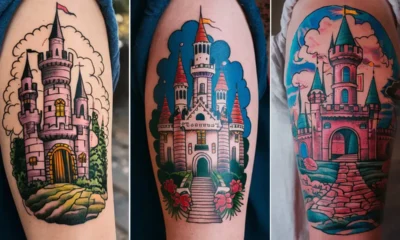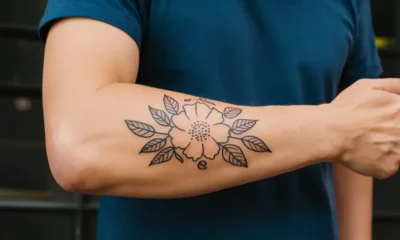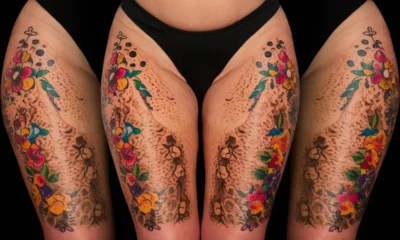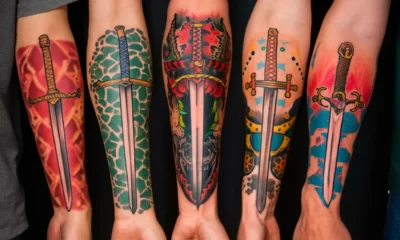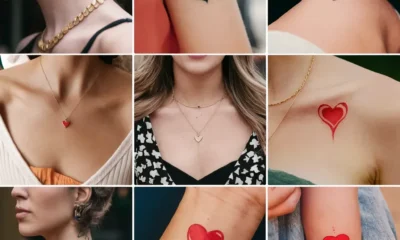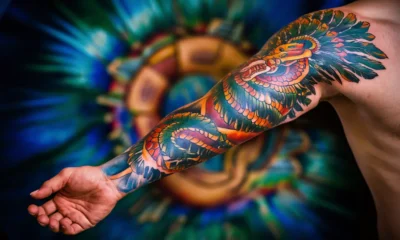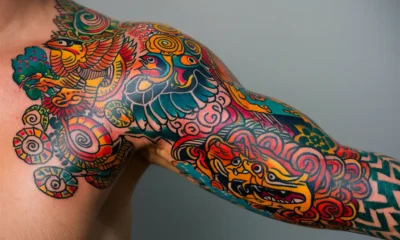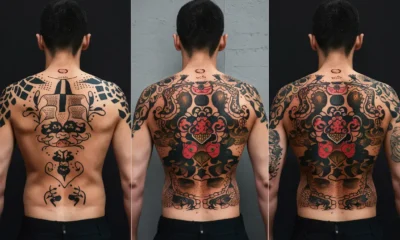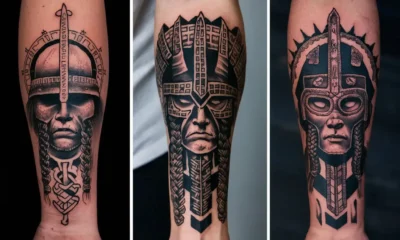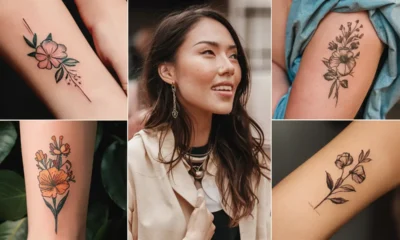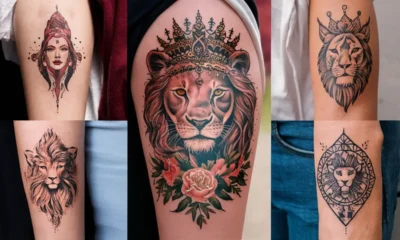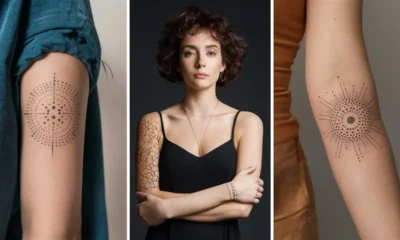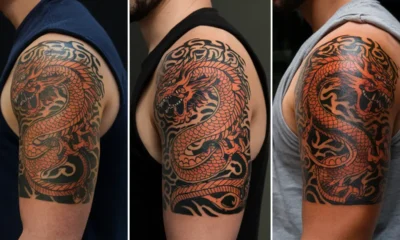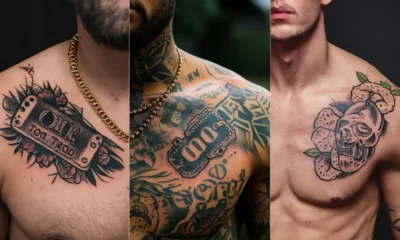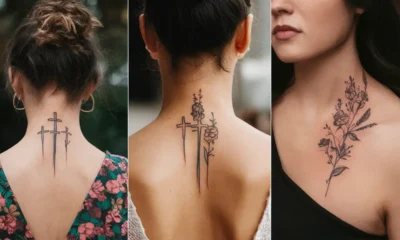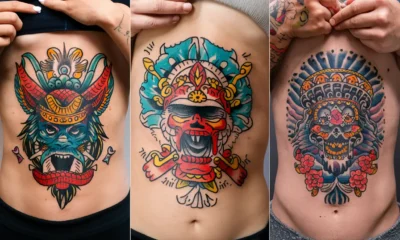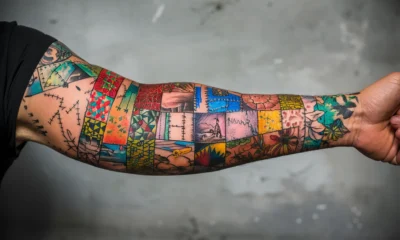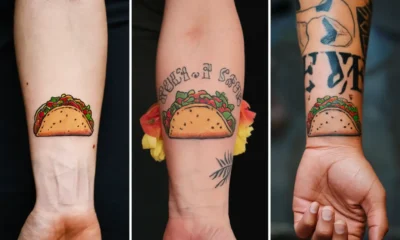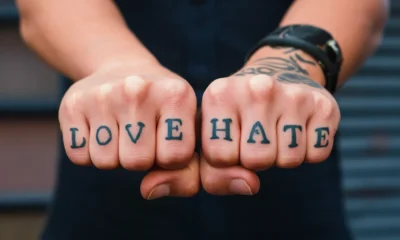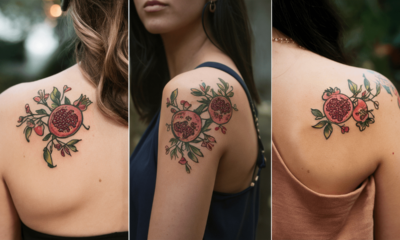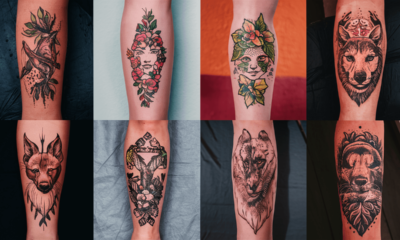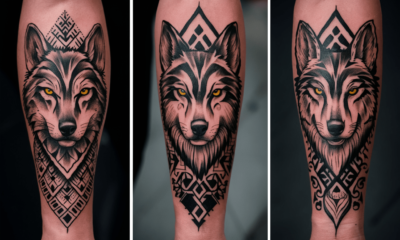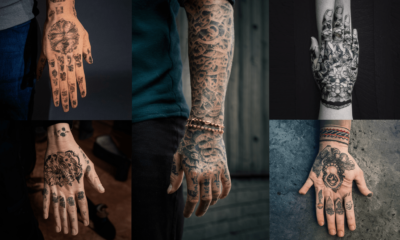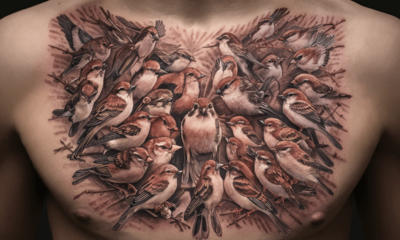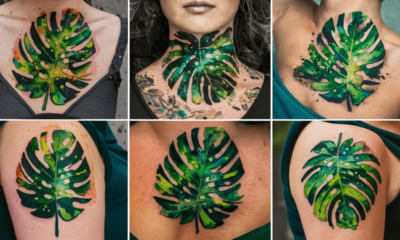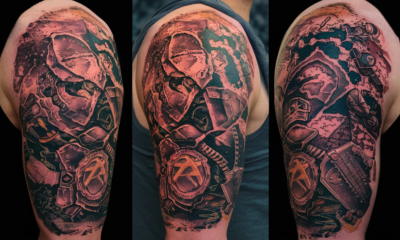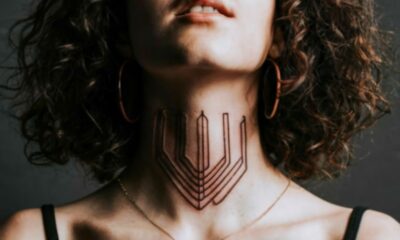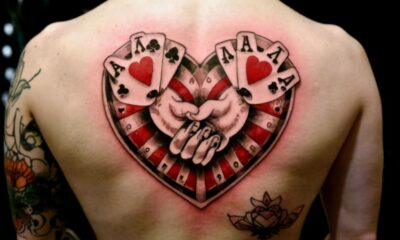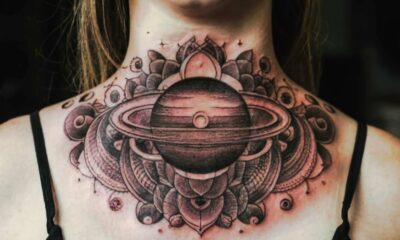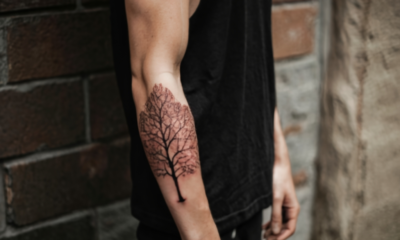Tattoos
From Greek Gods to Modern Art Statue Tattoos
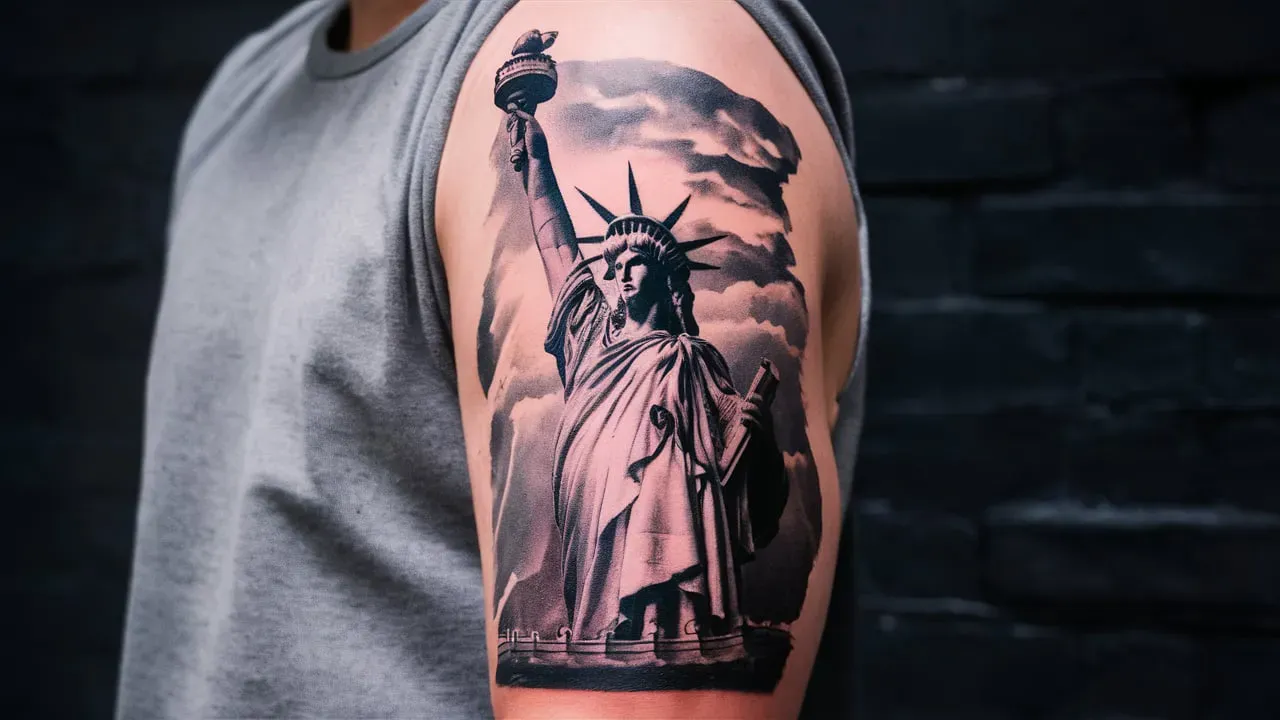
Tattoos of statues have become a significant and enduring trend in the world of body art. They are appreciated not only for their aesthetic appeal but also for the deep meanings and rich symbolism they carry.
Meaning and Symbolism
Tattoos of statues hold deep meanings and symbolism. Statues often represent important figures or ideals. A Greek statue tattoo, for example, can symbolize beauty and strength. These tattoos also show an appreciation for art and history. They keep the legacy of historical figures alive. People may get statue tattoos to embody traits they admire.
Cultural Value
The cultural value of statue tattoos depends on the statue depicted. Greek and Roman statues are popular in Western cultures. They symbolize classical beauty, wisdom, and power. Buddhist statues are common in Eastern cultures. They represent peace, enlightenment, and spiritual guidance. The cultural value of these tattoos is deeply personal. They reflect individual beliefs and values.
History
Tattoos and statues both have ancient roots. Evidence of tattoos exists from thousands of years ago. Statues have been used since antiquity to represent gods and leaders. Modern statue tattoos began as tattooing gained popularity in the West. Improved techniques made complex designs possible. Realism in tattooing helped statue tattoos become popular.
Who Might Be Interested in This Tattoo Category?
Art lovers often choose statue tattoos. These tattoos pay homage to favorite pieces of art. History buffs might select tattoos of historical figures. They admire specific eras or individuals. People feeling connected to certain ideals might choose statue tattoos. For instance, a tattoo of Athena symbolizes wisdom.
Different Tattoo Designs, Ideas, and Styles
There are many designs, ideas, and styles for statue tattoos. Each offers a unique way to express individuality and interests.
Greek Statue Tattoos
Greek statue tattoos are very popular. They often feature figures like Venus de Milo or Discobolus. These tattoos are usually detailed and realistic. They showcase fine lines and textures of the original statues. The realism makes them stand out and shows the artist’s skill.
Minimalist Statue Tattoos
Minimalist statue tattoos are simple yet powerful. They use clean lines and basic shapes to suggest the form of a statue. These tattoos can be subtle but impactful. Minimalist designs work well for smaller tattoos. They are ideal for those wanting a less conspicuous piece.
Roman Statue Tattoos
Roman statues also make great tattoo subjects. Common designs include Roman gods, emperors, and historical figures. The Statue of Augustus symbolizes leadership and power. These tattoos can be detailed and realistic like Greek tattoos. They can also feature Roman elements like laurel wreaths or architecture.
Modern Interpretations
Modern statue tattoos blend classical imagery with contemporary styles. They might combine a statue with geometric shapes, vibrant colors, or abstract patterns. This fusion creates a unique and eye-catching design. It stands out from more traditional tattoos.
Full-Body and Partial Tattoos
Statue tattoos can cover various body parts. Some people choose full-body representations. Others might pick a partial tattoo, like a bust or face close-up. Partial tattoos focus on specific details. They allow for more flexibility in placement.
Black and Grey vs. Color
Most statue tattoos are done in black and grey. This style emphasizes shadows and highlights. It makes the tattoo look more realistic. Some people prefer color statue tattoos. Colors can highlight features and add a unique twist.
Religious and Mythological Statues
Religious and mythological statues are popular choices. Buddhist statues represent peace and spiritual guidance. Hindu statues might depict gods like Shiva or Ganesh. These tattoos carry deep cultural and spiritual meaning. They reflect the wearer’s beliefs and values.
Combining Elements
Many statue tattoos combine different elements. A tattoo might feature a Greek statue with added flowers, animals, or geometric shapes. These combinations personalize the tattoo. They allow the wearer to tell a unique story.
Tattoo Artists’ Approach
Tattoo artists focus on detail and shading. They aim to create realistic tattoos. Shading creates depth and dimension. Techniques like stippling and cross-hatching are common. Artists use negative space to highlight features. The design process includes consultations and reference images.
Artists like Steve Butcher are known for hyper-realistic tattoos. Butcher’s work includes detailed statues and lifelike designs. Nikko Hurtado is another notable artist. He is famous for realistic and color portrait tattoos. His black and grey statue tattoos show his versatility.
Placement and Aftercare
Placement affects a statue tattoo’s appearance. Common locations include the forearm, upper arm, back, chest, and thigh. The size and complexity of the tattoo influence placement. Placement should consider existing tattoos and body movement.
Proper aftercare is crucial for tattoo longevity. Keep the tattoo clean and moisturized. Avoid direct sunlight and water submersion. Follow the artist’s aftercare instructions. Avoid picking at scabs or scratching the tattoo. Regular moisturizing and sun protection prevent fading.
Conclusion
Tattoos of statues blend art, history, and personal symbolism. They range from detailed replicas to minimalist designs. These tattoos carry deep cultural and personal significance. The process involves careful design, placement, and aftercare. Skilled tattoo artists like Steve Butcher and Nikko Hurtado excel in this style.
Statue tattoos offer endless possibilities. They let individuals express their connection to history, culture, and art. Whether small and subtle or large and detailed, statue tattoos remain popular and meaningful in body art.
-
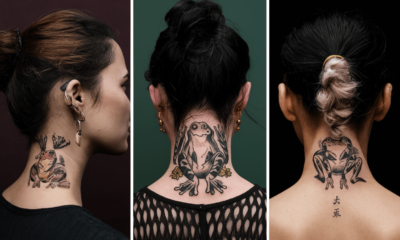
 Tattoos7 months ago
Tattoos7 months agoJapanese Frog Tattoos A Blend of Symbolism and Style
-
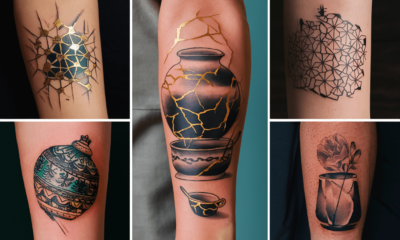
 Tattoos7 months ago
Tattoos7 months agoKintsugi Tattoo Embracing Beauty in Imperfection
-
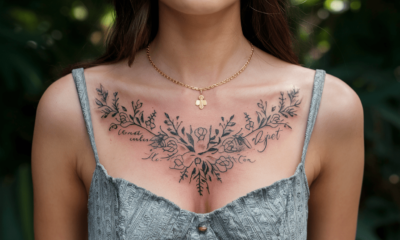
 Tattoos7 months ago
Tattoos7 months agoUnveiling the Artistry Female Chest Tattoos
-

 Tattoos7 months ago
Tattoos7 months agoDivine Guardians Exploring Guardian Angel Tattoos
-

 Tattoos8 months ago
Tattoos8 months agoExploring the Meaning of Stairway to Heaven Tattoos
-

 Tattoos10 months ago
Tattoos10 months agoHarley Davidson Tattoo 14+ Riding the Ink Highway Ideas
-

 Tattoos8 months ago
Tattoos8 months agoCrybaby Tattoos A Journey Through Emotion and Art
-
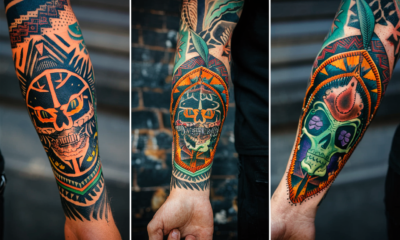
 Tattoos10 months ago
Tattoos10 months agoBlast Over Tattoos Transforming Skin Stories into Living Art

